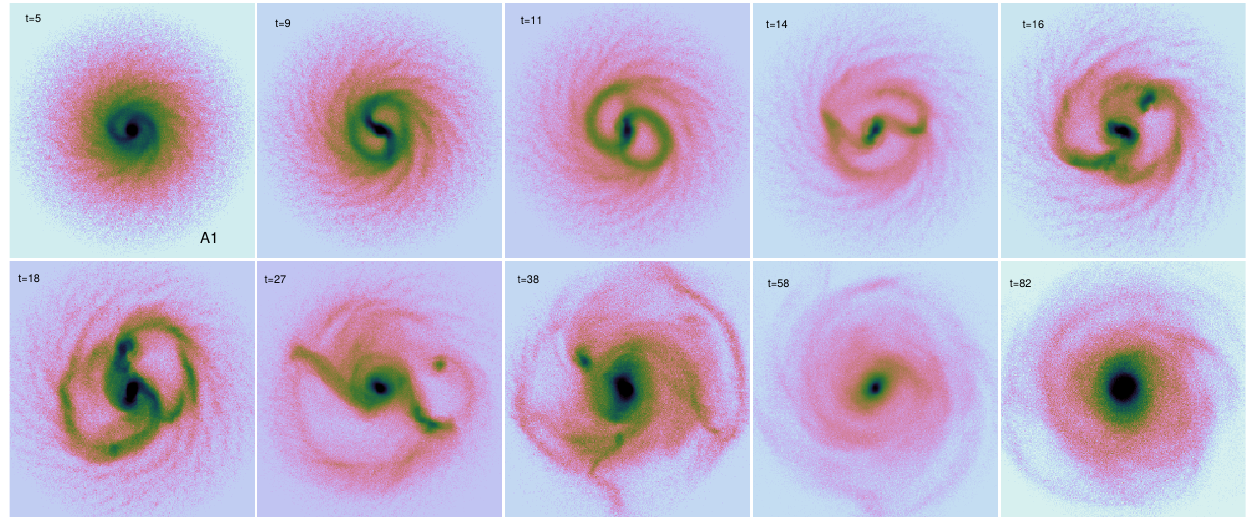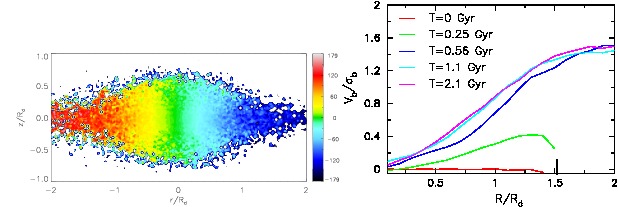What makes some galaxies unbarred in the Hubble sequence?
Although more than two-thirds of star-forming disk galaxies in the local universe are barred, some galaxies remain unbarred, occupying the upper half of the Hubble tuning fork diagram. Numerical simulations almost always produce bars spontaneously, so it remains a challenge to understand how galaxies sometimes prevent bars from forming. Using N-body
simulations, we show that galaxy models with compact classical bulges (whose average density is greater than or comparable to the disk density calculated within bulge half-mass radii) are able to prevent bar formation for at least 4 Gyr even when the stellar disk is maximal and having low Toomre Q. Further details can be found in by Saha and Elmegreen 2018, published in ApJ.
A number of observations suggest that classical bulges rotate faster than
the low lumonisity ellipticals but slower than boxy/peanut bulge which forms as result of
buckling instability of a bar. Howerver, the origin of angular momentum in the classcial
bulges remain known. In Saha, Martinez-Valpuesta and Gerhard (2012), we have shown that a low-mass initially non-rotating classical bulge
can actually gain significant amount of angular momentum and spin up thereby. During the evolution,
not only the classical bulge starts rotating but it rotates like a cylindrical rotator. This has an important implication for the Milky Way's bulge.
Spin up of classical bulges

